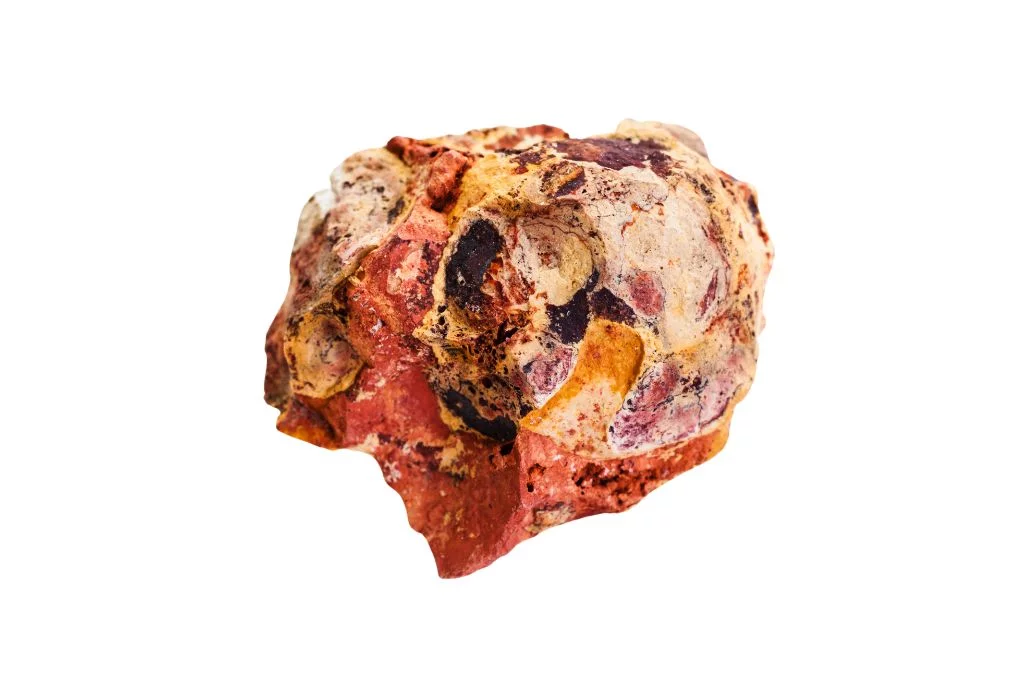Physical Appearance of Bauxite
Bauxite is a distinctive mineral with a unique appearance that sets it apart from other rocks and minerals. This aluminum-rich ore typically exhibits a reddish-brown to pale yellow color, depending on its composition and impurities. The reddish hue is often attributed to the presence of iron oxides, while paler varieties may contain less iron content.
Structure and Texture
In terms of structure, bauxite is generally found in a clay-like form, with a soft and earthy texture. It is often described as having a pisolitic structure, characterized by small, rounded grains or pellets called pisoliths. These pisoliths can range in size from a few millimeters to several centimeters in diameter, giving the mineral a distinctive, granular appearance.
Notable Physical Characteristics
One of the most notable physical characteristics of bauxite is its low specific gravity, typically ranging between 2.0 and 2.5. This makes it relatively lightweight compared to many other minerals. Bauxite also tends to be porous, with a sponge-like internal structure that contributes to its ability to absorb and retain moisture.
Unique Features
A unique aspect of bauxite is its variable hardness, which can range from 1 to 3 on the Mohs scale. This variability is due to the mixture of different minerals that compose bauxite, including gibbsite, boehmite, and diaspore. Additionally, bauxite often contains visible impurities such as silica, iron oxides, and titanium dioxide, which can create interesting patterns and color variations within the mineral.
Historical and Cultural Significance of Bauxite
Bauxite, while not as historically revered as other minerals, has played a crucial role in modern industrial development. Discovered in 1821 by Pierre Berthier in Les Baux-de-Provence, France, it gained significance in the late 19th century as the primary ore for aluminum production. This discovery revolutionized manufacturing and transportation industries, leading to lightweight yet strong materials for aircraft, automobiles, and consumer goods.
Metaphysical Associations
In metaphysical circles, bauxite is sometimes associated with grounding energies and connection to the Earth. Some believe it can help align one’s energy with the natural world, promoting stability and balance. While not as popular as other crystals in spiritual practices, some practitioners use bauxite to enhance their connection to the physical realm and foster a sense of security.
Common Uses and Applications
The primary use of bauxite is in the production of aluminum, which has a wide range of applications. In construction, aluminum derived from bauxite is used in building materials, windows, and doors. The transportation industry relies heavily on aluminum for lightweight vehicle components, aircraft parts, and shipping containers. In the consumer goods sector, bauxite-derived aluminum is found in packaging, cookware, and electronics. Additionally, the chemical industry uses bauxite to produce aluminum sulfate for water purification and paper manufacturing.
Benefits and Modern Applications
Bauxite’s importance in producing aluminum has led to numerous benefits in modern society. The lightweight nature of aluminum has contributed to increased fuel efficiency in vehicles and aircraft, reducing carbon emissions. In construction, aluminum’s corrosion resistance and durability have improved building longevity and reduced maintenance costs. The recyclability of aluminum has also made it an environmentally friendly option, contributing to sustainable practices in various industries. Furthermore, bauxite residue is being explored for use in cement production and soil remediation, showcasing the mineral’s potential for more sustainable applications in the future.

